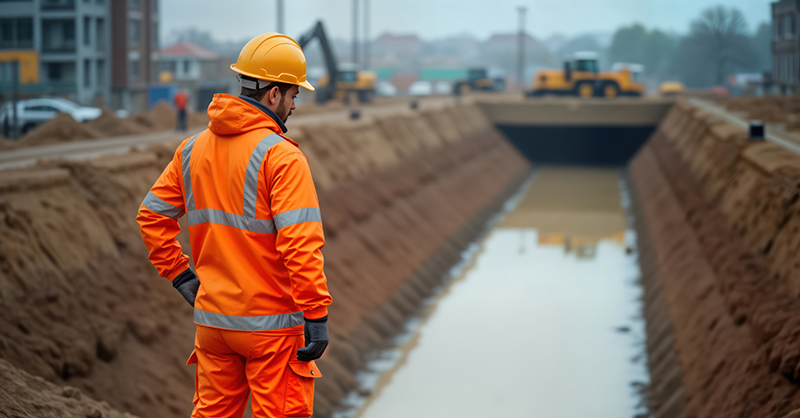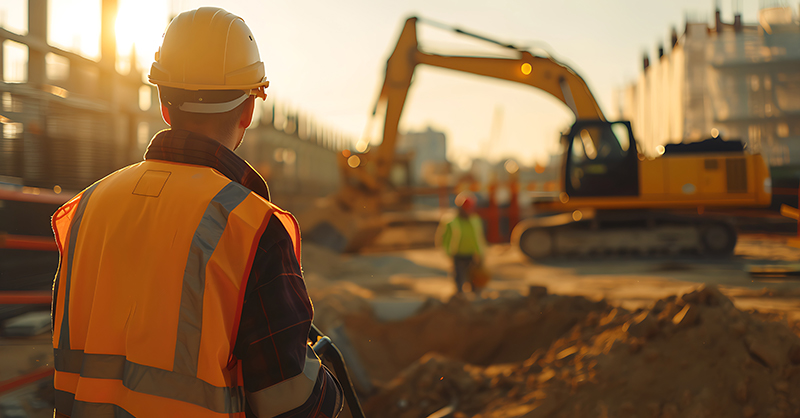Trenching and Excavation Safety: Quick Guide to Preventing Hazards

Trenching and excavation are common types of work on construction and utility projects, but can present unique and significant hazards when work is active. The primary hazard is the collapse of trench/excavation walls.
Proper planning and adherence to safe practices can help prevent accidents and ensure the safety of workers. Below are key safety measures your organization can follow to help ensure safer trenching and excavation operations.
Preplanning: Your First Step to Safe Trenching and Excavation
Effective preplanning is crucial for trenching and excavation safety. Before any digging begins, it is essential to identify and mark underground utilities to avoid damaging them. This is where calling 811 comes into play, connecting you to a local service that will mark underground utility lines, so you know where it's safe to dig.
Steps for Preplanning
- Call 811: Contact the service at least 2-3 business days before starting any excavation activity.
- Mark Utilities: Ensure all underground utilities are accurately marked and identified.
- Assess Soil Stability: Evaluate the soil to determine its stability and classify it accordingly.
- Plan Job Layout: Identify safe locations for spoil piles and routes for heavy equipment.
- Develop Emergency Plans: Create a trench emergency action plan and ensure all workers are familiar with it.
Some Top Safety Protocols for Trenching and Excavation Work
Protective Systems
- Shoring: Use supports such as planking or hydraulic jacks to prevent trench walls from collapsing.
- Shielding: Employ trench boxes to shield workers from cave-ins.
- Sloping and Benching: Adjust the trench walls to prevent soil from falling in.
General Safety Measures
- Keep Heavy Equipment Away: Maintain a safe distance between heavy equipment and trench edges.
- Soil Management: Keep excavated soil and materials at least 2 feet from trench edges.
- Atmospheric Testing: Test for hazardous fumes and gases, especially in trenches deeper than 4 feet.
- Proper PPE: Ensure all workers are equipped with appropriate personal protective equipment.
Additional Resources
The Federal Occupational Safety and Health Administration (OSHA) has developed the following resources to assist employers with maintaining worker safety during trenching and excavation operations:
- Trenching and Excavation Guide
- Daily Inspection Checklist for Trenching/Excavation Sites
- Trenching and Excavation Safety Talk Document
By following these best practices and using a daily checklist, you can create a safer work environment for trenching and excavation projects.









